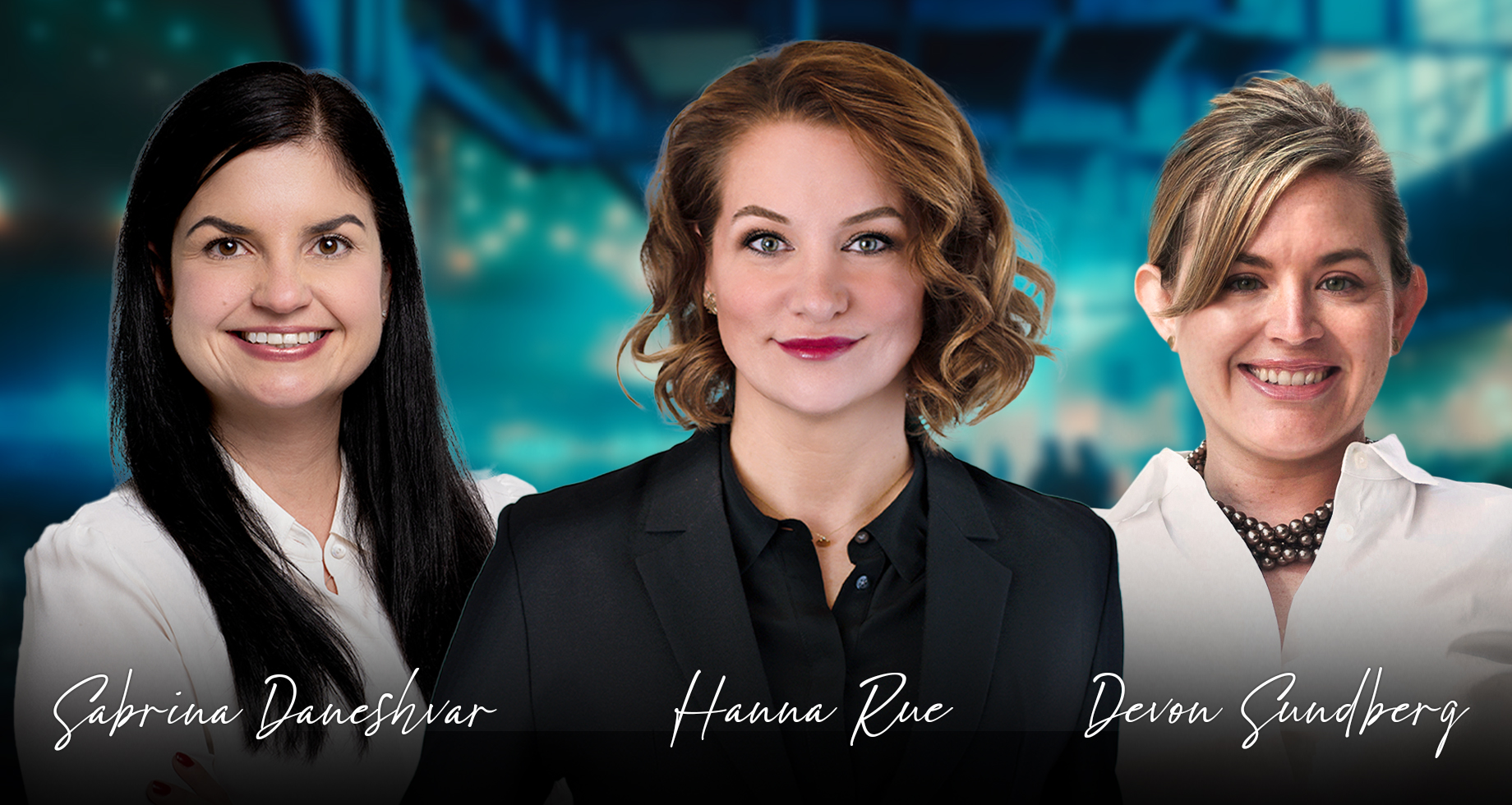December 30, 2025
Women Leaders at LEARN Talk About Working in STEM—and Why Behavior Analysts Sometimes Get Left Out

FEATURED POSTS
December 15, 2025
November 25, 2025
Most of us in the autism field know that women make up the bulk of board certified behavior analysts (BCBAs). In fact, women represent 85.43 percent of BCBAs, according to the Behavior Analyst Certification Board. What often gets overlooked, however, is that the nearly 78,000 female BCBAs across the country are also part of STEM, the acronym for an area of work—science, technology, engineering, and math—notoriously lacking in female leadership. Why are behavior analysts left out?
This week, in honor of Women’s History Month, we asked three female leaders at LEARN what it’s like to work in a STEM field—and how they use science, math, and data analysis in their positions. The women include Chief Clinical Officer Hanna Rue and Senior Vice President Sabrina Daneshvar, in addition to consultant and Women in Behavior Analysis (WIBA) Conference Director Devon Sundberg. Here’s the conversation.
Q: STEM is a hot topic right now, but the field of behavior analysis tends to get left out of the conversation. Why do you think that’s the case?
A (Hanna Rue): If you ask behavior analysts if their friends and family understand their job, the answer is usually “no.” As a field, behavior analysis has not done a great job at marketing the positive impact the field can have on socially significant behaviors. When we work with kids, our work looks like play—and that’s great, but what people don’t often see are the copious data collection, critical analysis, and data-based decisions that happen behind the scenes in treatment.
A (Devon Sundberg): As humans, we have an overwhelming desire to pigeonhole all aspects of our lives and tend to view helping individuals as a form of therapy. Mistakenly, society does not often consider therapy a form of science. Applied behavior analysis, especially as practiced at LEARN, represents the union of science and the love for helping others. For instance, we can’t track meaningful change objectively without data, and science is a huge part of what we do.
A (Sabrina Daneshvar): Some people consider behavior analysis a soft science and underestimate the importance of the science we exercise. The term “soft science” is a misnomer. In actuality, we’re doing the same things scientists do by using observation and data to make treatment decisions.
Q: You actually use a lot of science and math, both in your leadership positions at LEARN and in your previous clinical work as behavior analysts. Can you talk some about the STEM skills you use—and why they’re a big part of behavior analysis?

A (Sabrina Daneshvar): We have scientific rigor and methodologies in place that aren’t always visible. For instance, we make a hypothesis, test the hypothesis, and use evidence-based, scientific evaluation to make decisions and refine our approaches daily. Our work requires us to account for what we observe, while also accounting for sources of variability. There’s nothing simple about behavior analysis.
A (Hanna Rue): I constantly use math to evaluate how we’re doing as a company from a clinical perspective. For instance, we conduct surveys at LEARN to evaluate our services and use the data to inform our training and clinical practices. A number of projects require data analysis and an understanding of parametric and nonparametric statistics.
Q: How has ABA therapy evolved with the use of data gathering and analysis? What about aggregated data—how does that contributed to better treatment and services?
A (Hanna Rue): I started working in the field before it was common to have apps assist in data collection. Back then, I collected paper and pencil data and graphed it on good old-fashioned graph paper. Now, we can collect data via an app that can be downloaded to a tablet or smart phone. It is incredible to think that I can see updated behavioral data from clients at any point in time. Quick access to behavioral data helps to improve the quality of behavioral programming and efficiency in clinical practice.
A (Sabrina Daneshvar): I can relate to Hanna—and add that as a field, we’re starting to look not only at a single client’s response to a particular behavior intervention but also to multiple clients across the country. This can only strengthen the work we do and the interventions we administer. Insurance companies are starting to request data, too, as evidence that our services work. Thankfully, we’re in a good position at LEARN to provide it.
Q: Did you pursue math, science, and other STEM-related fields growing up? When did you take interest in these areas?

A (Devon Sundberg): I had little interest in math or science growing up, though I was interested in helping people. My first job was at a group home for children with autism, but no one trained me, and my efforts weren’t all that successful. In my next job, I learned how to provide applied behavior analysis—and realized how much it could have helped kids in my former job, at the group home. I was disappointed that not all children had access to this amazing therapy and excited to finally feel effective in my work. From this, I learned how useful math and science can be when applied to real-life problems. From then on, I was hooked.
A (Sabrina Daneshvar): Like Devon, I didn’t pursue math and science as a kid. In college, I majored in psychology and fell into the field of autism when I worked as a special education teacher at an autism treatment center affiliated with my school. It was one of the hardest jobs I’ve ever had. I didn’t feel equipped to handle my students and decided to go back to school to earn a doctorate in developmental psychology—to learn how to make things better. As I got more involved, not just in the treatment but also the research, that’s when the science interest in me piqued. I saw the need for science and statistics and haven’t looked back.
Q: A longstanding belief (or perhaps a myth) in our society—and in many societies—is that boys are better at math than girls. But what does the research say?
A (Hanna Rue): Empirical evidence does not support male superiority in math or science. In fact, history suggests that the environment was the primary factor resulting in so many more males than females in math and science, with gender stereotypes leading teachers and mentors to encourage boys and young men to participate in math- and science-related activities. Given that behavior analysts understand how much adult attention and praise can shape behavior, it isn’t surprising that more men ended up in careers in science or math. That is all changing now, and I am thrilled.
A (Sabrina Daneshvar): Yes, research shows that boys and girls learn math at similar rates, but it’s the social expectation that boys are naturally better at math that can make boys perform better. Carol Dweck, who wrote the book The Growth Mindset, has done some interesting research in this area. Dweck found that girls who viewed math ability as “a gift” performed more poorly in math than those who viewed it as something they could improve through practice and experience. According to Dweck’s theory, when girls believe they can achieve in math by applying themselves, they can, in fact, achieve in math (and science, too).
Q: What advice would you have for girls or women who shy away from or just dislike or struggle with math and science?

A (Sabrina Daneshvar): Math and science skills are a continuum. There’s a lot of variation in skill levels among various skill sets. For instance, someone might be great at data analysis and struggle with communicating findings or understanding the impact. I’m not the best of math, but I have a solid grasp of statistics and how to do a scientific study. My advice is not to be intimidated—and trust that you will have strengths in one area and limitations in another. And that’s OK.
A (Devon Sundberg): Math and science can make us more effective in the areas we care most about. I wasn’t excited about math or science until I realized these disciplines allowed me to do my job more effectively. At that point, math and science started to come naturally because they served a meaningful purpose in my life.
A (Hanna Rue): For young girls, I think it is important to find activities they really enjoy and discover how they connect to STEM. One of my favorite websites to recommend to parents is A Mighty Girl—it’s full of inspiring stories, books, and resources that focus on female contributions to science and technology.
Q: What advice would you have—for women and men, or girls and boys—about working in ABA? What, in your opinion, are some of the advantages of a career in the ABA field?
A (Hanna Rue): Anyone who finds human behavior interesting should consider a career in ABA. The technology of ABA can be used to address an endless number of socially significant behaviors. In fact, behavior analysts now work in fields that involve social justice, health and fitness, reducing waste, and safety.
The field of ABA is relatively young, and opportunities for research and discovery—and to advance our science—are endless.
A (Devon Sundberg): Join the field of behavior analysis, even briefly. In addition to making me more effective in all facets of my life, behavior analysis makes me a better human. Understanding why we behave in the ways we do leads to enhanced communication, grace, and acceptance of others. For these reasons, I hope everyone learns about behavior analysis throughout their life.






